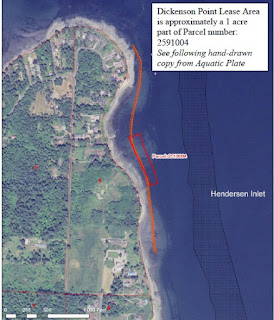Record High Temperatures
and Genetically Modified Oysters
Increase Risks from Puget Sound Oysters
Warming weather and waters combine to compound shellfish safety problems
In addition to having closed Pickering Passage and the southern portion of Hood Canal to the commercial harvest of oysters due to high levels of vibrio, the Department of Health has also issued a warning after discovering paralytic shellfish poisoning (PSP) toxins in shellfish from portions of Hood Canal, along the outer coast, northern Puget Sound, and the Strait of Juan de Fuca (see press release below). Record warm weather and coming minus tides as July 4 approaches make harvesting and consuming shellfish harvested from Puget Sound particularly risky, especially as the PSP toxins cannot be removed by cooking shellfish. Consumers are encouraged to review the Department of Health's "Recreational Shellfish Harvesting: Safe handling, storing, and cooking practices."
Genetic modification: Make them bigger,
make them sterile, make them tasty all year long.
Even in the summer months.
Genetically modified oysters compound problems from summer heat
In years past oysters were typically not palatable during the summer months as they became fertile. But with the creation of genetically modified oysters which are sterile the taste of oysters during the summer months became less of an issue, resulting in increased consumption. A 2010 article on the genetic modification of oysters, creating what are known as "triploids" and "tetraploids", discusses how extra chromosomes are forced into oyster eggs, using a mycotoxin called cytochalasin B. In part the article discusses the creation of the genetically modified Pacific oyster sold on the West Coast, primarily from Puget Sound and Willapa Bay:
"Working with Coast Oyster Company, one of the largest commercial oyster companies in the world, Allen and Downing next adapted his tricky chemical techniques to the task of creating triploids in large batches. The solutions Allen and Downing came up with were sometimes messy but mostly successful, with their commercial batches averaging 70 to 90 percent triploids. The bucket biologist had joined the biotech revolution...
"...And large oyster hatcheries on the West Coast were selling triploids to oyster growers, they in turn were selling them to restaurants, and restaurants were selling them to customers."June 26 Press Release, Department of Health: Marine biotoxins reach dangerous levels in Puget Sound and coastal areas
OLYMPIA -- High levels of naturally-occurring marine biotoxins have prompted the closure of recreational shellfish harvesting in portions of Hood Canal, along the outer coast, northern Puget Sound, and the Strait of Juan de Fuca.
In these areas, public beaches have been closed and private property owners are advised not to harvest shellfish until toxin levels decrease. Harvesters can find the status of their harvest area on the Department of Health Shellfish Safety Maps.
“Knowing that a shellfish area is safe for harvest is important to avoid possible illness, and we’ve made that easy with our clickable maps,” said Laura Johnson with the agency’s Shellfish Licensing and Certification programs. “This year has been particularly active for marine biotoxins, leading to frequent closures of recreational harvesting areas. We’re opening and closing harvest areas every day. It’s extremely important to check our Shellfish Safety Maps before heading to a public beach or harvesting on your own property.”
Testing has shown dangerous levels of paralytic shellfish poisoning (PSP) toxins near Hoodsport in southern Hood Canal for the first time. At the same time, domoic acid levels along the outer coast have recently closed razor clam and crab harvests.
Marine biotoxins are not destroyed by cooking or freezing, and people can get very sick and may even die from eating contaminated shellfish. Symptoms of PSP can appear within minutes or hours and usually begin with tingling lips and tongue, moving to the hands and feet. This is followed by difficulty breathing and potentially death. Anyone who has eaten shellfish and begins having these symptoms should get medical help immediately.
The state health department works with commercial harvesters in areas with increasing marine biotoxin levels to thoroughly test product before it can be harvested and sold. All commercially harvested shellfish currently on the market should be safe to eat.
The Department of Health website (www.doh.wa.gov) is your source for a healthy dose of information. Also, find us on Facebook and follow us on Twitter.









